What is Electromagnetic Induction?
- Electromagnetic induction is the process that leads to an electromotive force when a conductor moves across a magnetic field.
- An electromotive force is also produce if a magnetic field moves across a conductor.
- Electromagnetic induction has many real-world applications, such as:
Generating electricity.
Transforming voltages.
Using bank cards and smart cards.
Metal detecting and security checks.
Regenerative braking.
Induced Electromotive Force
- A uniform magnetic field induces an electromotive force in a straight conductor moving perpendicularly to it.
- Recall how a current in a magnetic field experiences a force perpendicular to the current and the magnetic field.
- Likewise, the movement of a conductor or a magnetic field relative to each other creates an electromotive force in the conductor.
Electromagnetic Induction in a Coil
- Coils and magnets can be used to create an electromotive force.
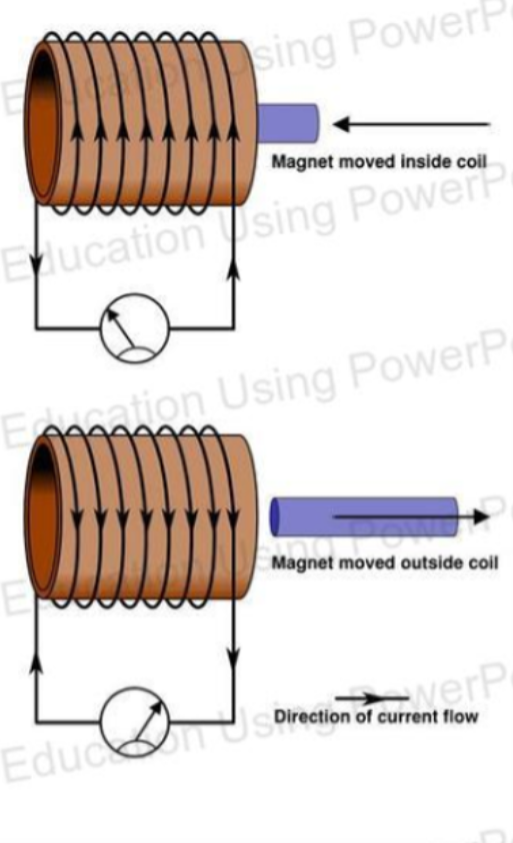
- The direction of inducted current is reversed if:
The magnet is moved in the opposite direction.
The other pole is inserted first.
- The size of the induced current can be increased by:
Increasing the speed of movement.
Increasing the magnet strength.
Increasing the number of turns on the coil.
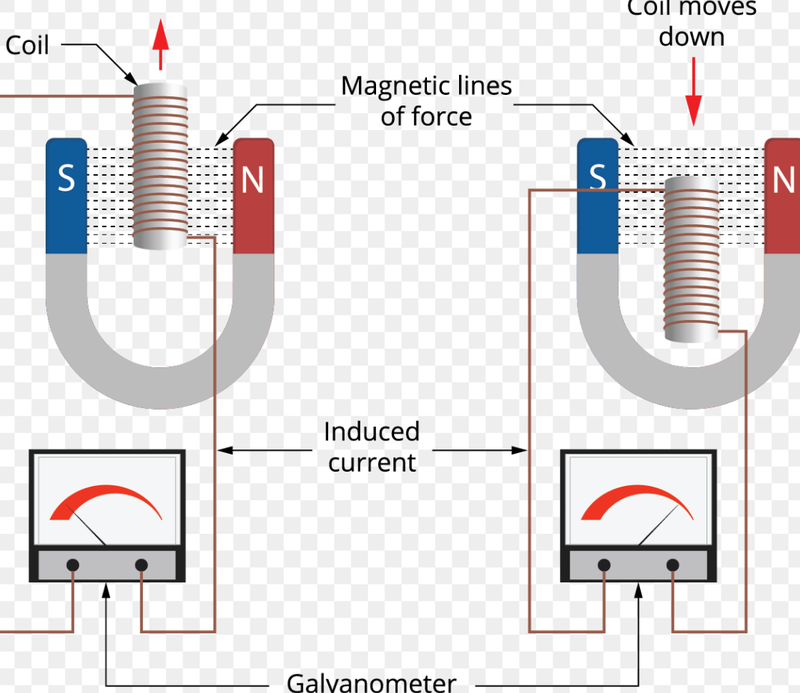
- The same effect occurs if a coil is moved through a magnetic field instead.
Electromagnetic Induction in Moving a Wire
- Electromagnetic induction also can occur if a wire is moved parallel to a magnetic.
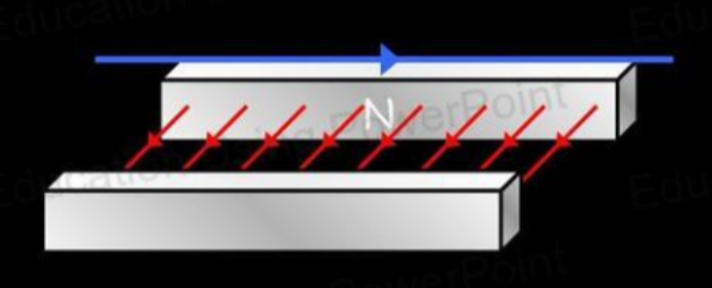
- The direction of induced current is reversed if:
The wire is moved in the opposite direction.
The field is reversed.
- The size of the induced current can be increased by:
Increasing the speed of movement.
Increasing the magnet strength.
Faraday's Law of Magnetic Induction
Magnetic Flux
- Magnetic flux density, B, shows how close together field lines are, or how many field lines pass through a particular area.
- Magnetic flux, given by Φ gives the total number of field lines.
- Magnetic flux density is measured in webers (Wb) per square meter, or Wbm⁻², or simply using the equivalent unit, Teslas (T).
- Magnetic field strength is equal to the magnetic flux density.

- Spaghetti can be thought of as way to visualize magnetic flux density.
- The amount of spaghetti is the same regardless of whether it is packed tightly or spread out over a much larger volume.
- Magnetic flux density is greater if the field lines (spaghetti) are packed closer together and it is smaller if the magnetic field lines are spread out.
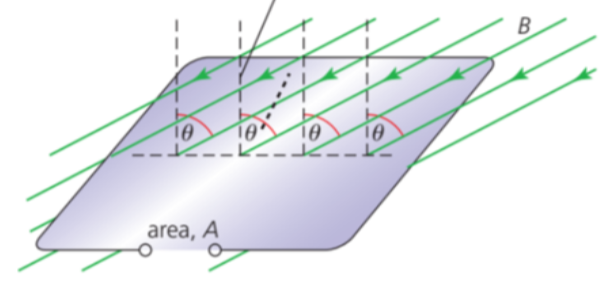
- The magnetic flux of a magnetic field crossing an area is given by:
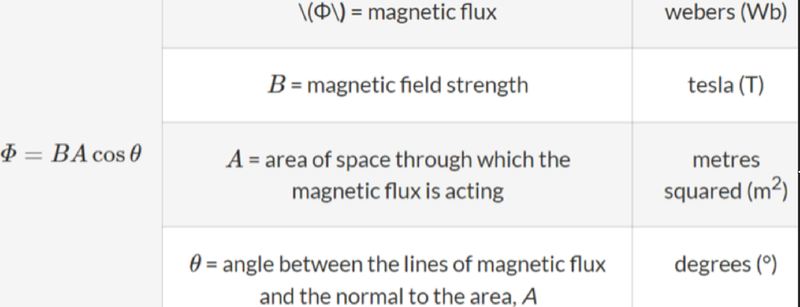
- Magnetic flux density is simply magnetic flux divided by the area:
Φ/A = Bcosθ
- Magnetic flux is the greatest when θ = 0°, as then cosθ = 1.
- Likewise, magnetic flux is the smallest when θ = 90°, as then cosθ = 0.
Magnetic Flux Linkage
- For a coil of N turns, the total magnetic flux is the product of the number of turns and the magnetic flux, NΦ.
- This is called the magnetic flux linkage.
- It is given by:
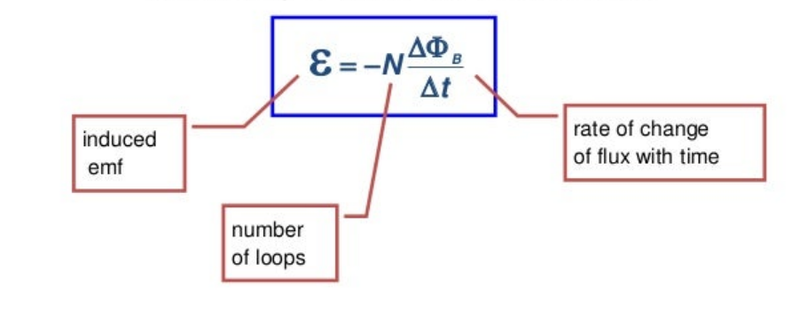
- It states that the induced EMF for a magnet in a coil is directly proportional to the rate of change of flux linkage.
- Thus Faraday's law states that the induced electromotive force is the derivative of the magnetic flux linkage!
Lenz's Law
- Consider a magnet in a solenoid.
- The current induced in the magnet induces a north pole that repels the magnet again.
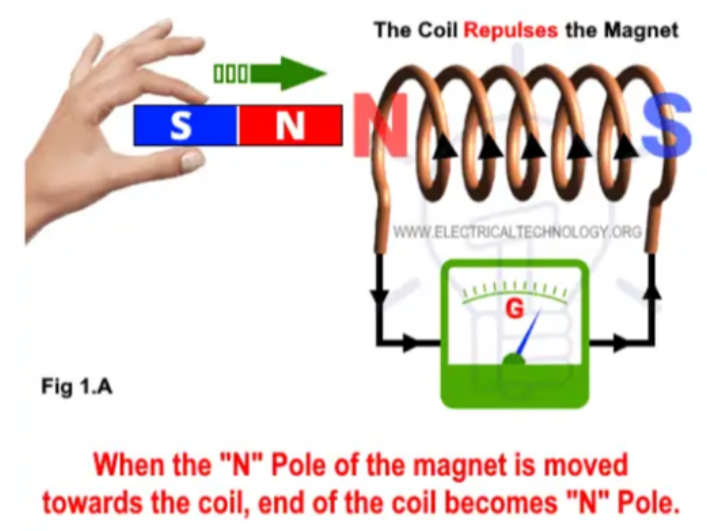
- The induced electromotive force is such that it will oppose the change causing it.
- This is the reason for the negative sign in Faraday's law!
- Lenz's Law states that:
- Any current driven by an induced electromotive force opposes the change that caused it.
- This is given by the equation:
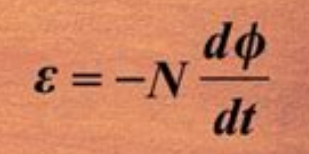
- While this is given in derivative form, it is the same as Len's law, as its shows that the electromotive force is equal to the negative of the change in magnetic flux linkage over change in time.
- The number of turns, N, is not included in the derivative as it is a constant.
- This equation shows that:
When a bar magnet goes through a coil, an EMF is induced within the coil due to a change in magnetic flux.
A current is also induced which means the coil now has its own magnetic field.
The coil's magnetic field acts in the opposite direction to the magnetic field of the bar magnet (shown by the minus sign).
- If a direct current (dc) power supply is replaced with an alternating current (ac) supply, the induced electromotive force will also be alternating with the same frequency as the supply.
Energy Transfers During Electromagnetic Induction
- The direction of an induced EMF is determined by Lenz's law and is a consequence of energy conservation.
- If we push a magnet against a field, then it does work on a system that shows up as current.
- If the field didn't oppose the change in the magnetic flux, the magnet would be pulled in and produce a current without anything having done work.
- Electric potential energy would be created without having done work, violating the conservation of energy.
- Thus to ensure energy isn't created out of nothing, the current in the coil, and the magnetic field it creates oppose the movement of the magnet.
Cutting Magnetic Fields
- Consider a conductor of length l moving at a speed v through a magnetic field at 90° to the field lines.
- According to Faraday/Lenz's laws:

- Where B is the magnetic flux density, l is the length of the conductor, and v is the velocity of the conductor.

- For a coil, the number of turns are more than one.
Electromagnetic Induction in Rotating Coils
- A uniform magnetic field induces a sinusoidal varying EMF in a coil rotating within it.
- This can be utilized in generators that produce alternating current, which continuously swaps directions.
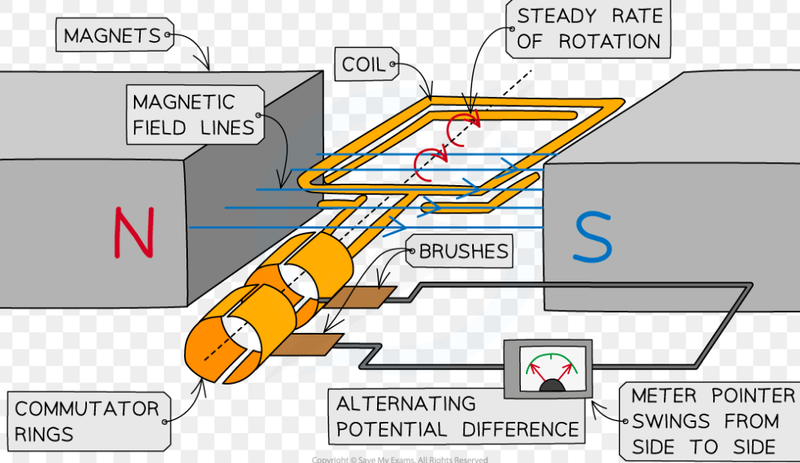
- Slip rings and brushes in an AC generator are used for connecting the rotating coil to the external circuit.
- When the coil turns in one direction:
The pointer defects first one way, then the opposite way, then back again.
The pointer deflects in both directions because the current in the circuit repeatedly changes direction as the coil spins.
- This is because the induced potential difference in the coil repeatedly changes its direction.
- The induced potential difference and the current alternate as they repeatedly change direction.
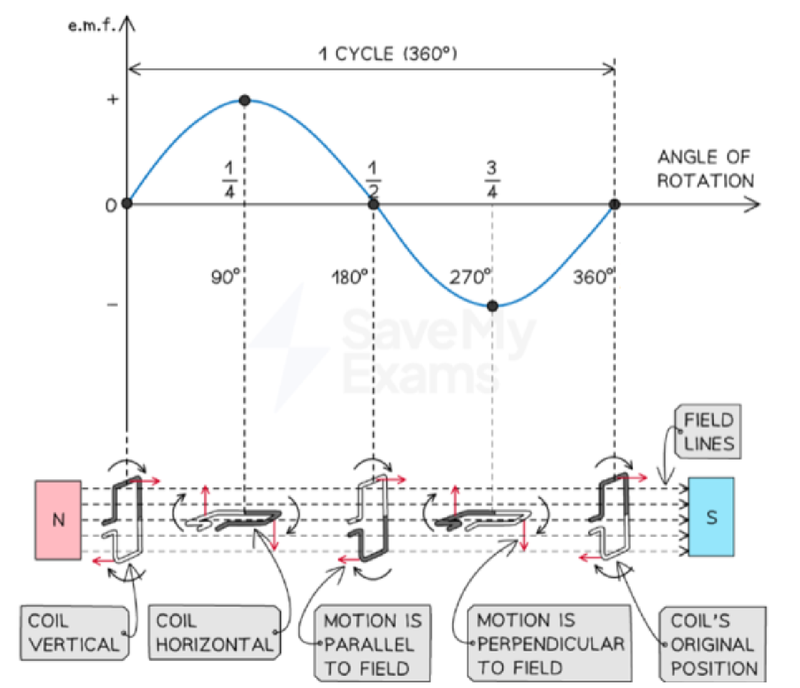
- The induced electromotive force can be graphed to look like a sine wave function.
- It is calculated as:

- The induced electromotive force is thus based on the angular speed and original electromotive force before rotation.
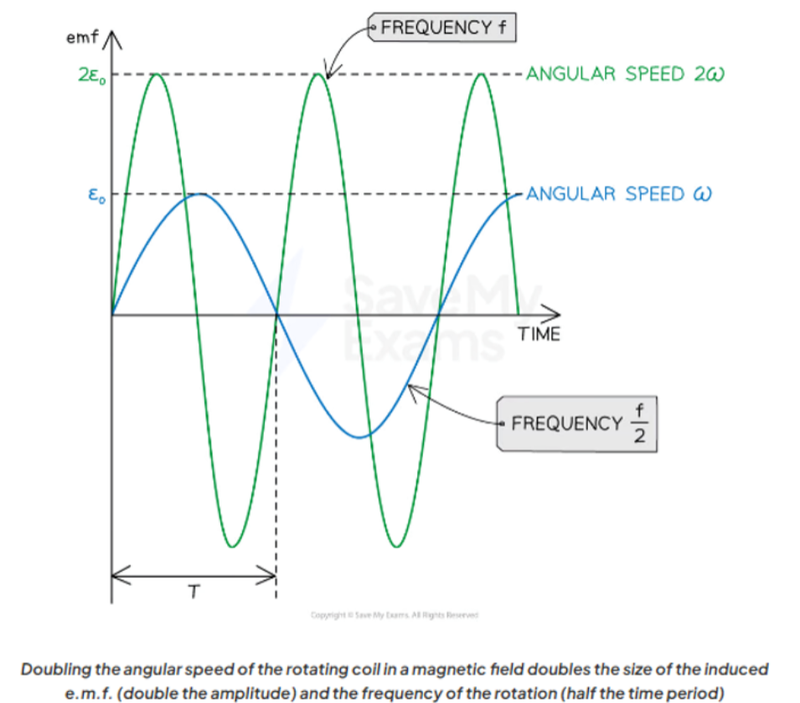
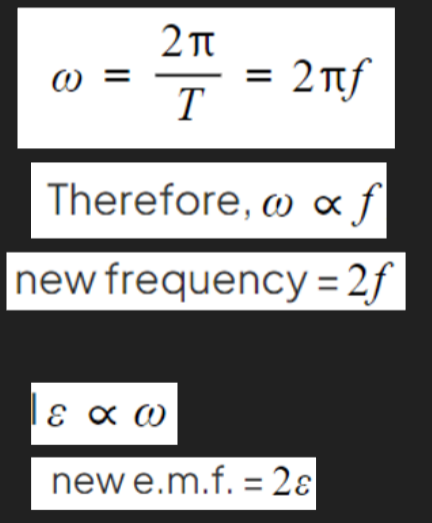
Self Induction
- Self induction is the effect in which a change in the current in a circuit tends to produce an induced electromotive force which opposes the change of the current in the same circuit.
- When a current flows in a coil, a magnetic field is produced around (and inside) the coil.
- Inside the coil, there is a changing magnetic flux as we open or close a switch.
- There is no magnetic flux when the switch is open, and there is a non-zero magnetic flux when the switch is closed and current flows through the circuit.
- A changing magnetic flux induces an electromotive force.
- So, by opening and closing the switch, the coil is inducing an EMF, sometimes called a back EMF in itself.
- This is called self induction.
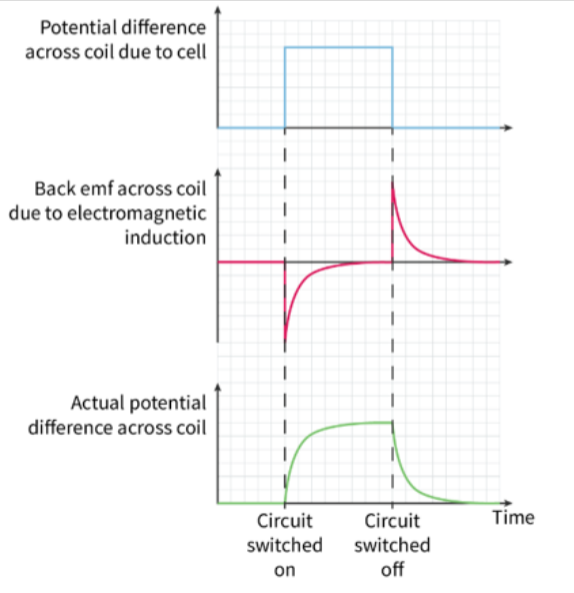
Sources
https://www.slideshare.net/sayan79/faradays-laws-and-its-applications